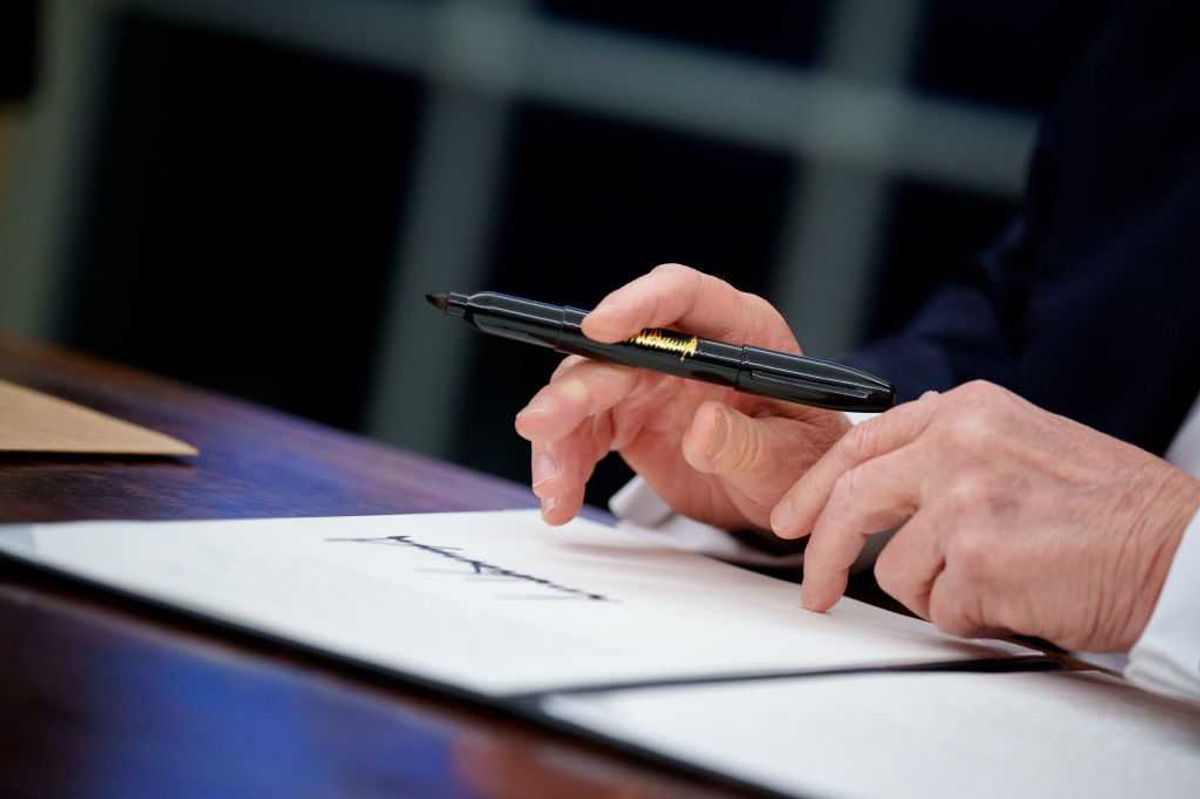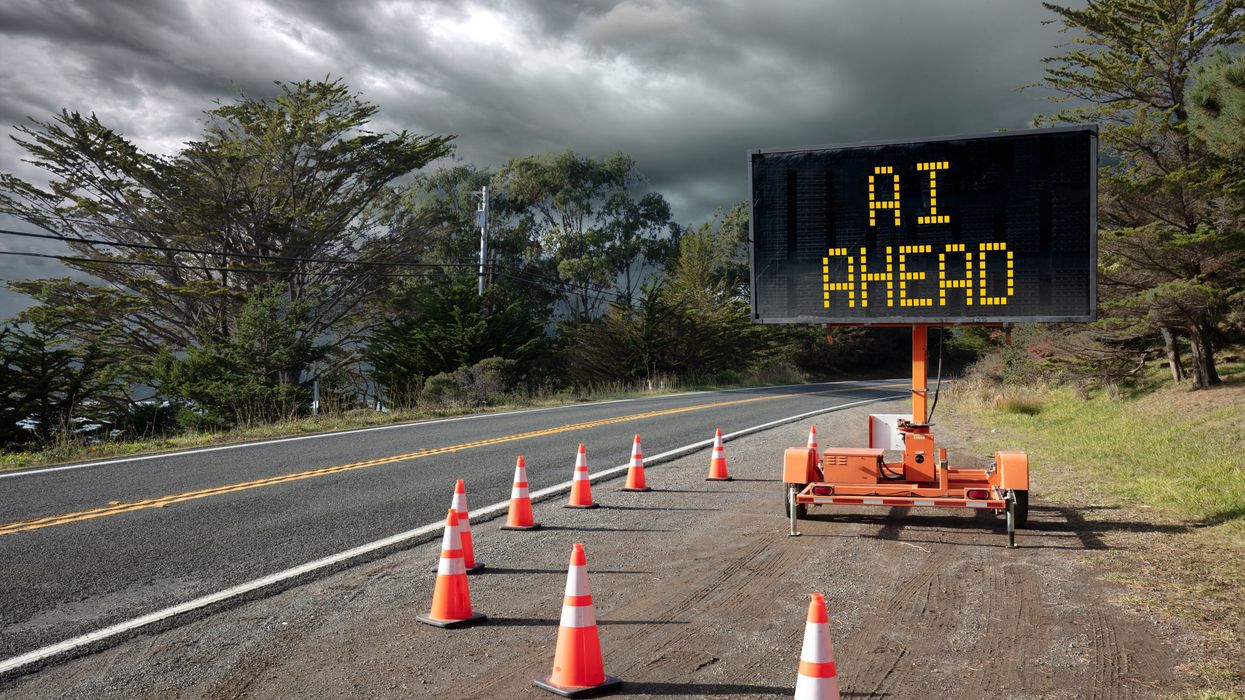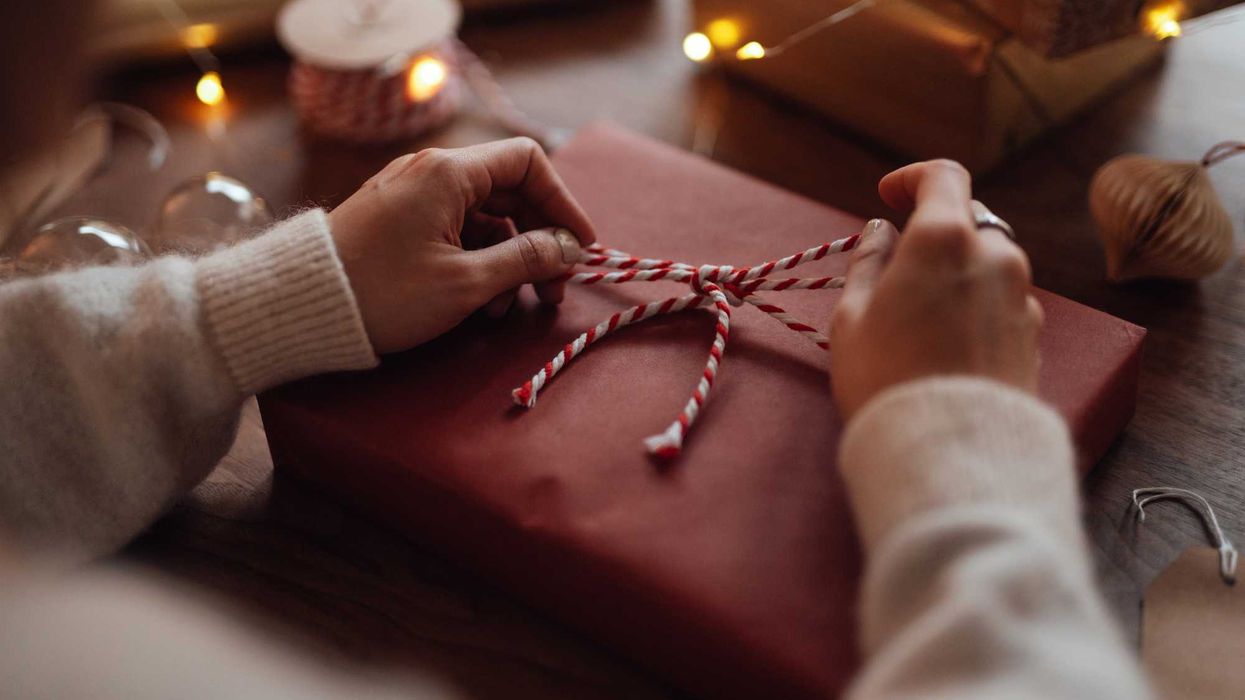Sikora is a research assistant with the German Marshall Fund's Alliance for Securing Democracy. Gorman is the alliance’s senior fellow and head of the technology and geopolitics team; Levine is the senior elections integrity fellow.
Days before New Hampshire’s presidential primary, up to 25,000 Granite State voters received a mysterious call from “President Joe Biden.” He urged Democrats not to vote in the primary because it “only enables the Republicans in their quest to elect Donald Trump.” But Biden never said this. The recording was a digital fabrication generated by artificial intelligence.
This robocall incident is the highest-profile example of how AI could be weaponized to both disrupt and undermine this year’s presidential election, but it is merely a glimpse of the challenges election officials will confront. Election workers must be well-equipped to counter AI threats to ensure the integrity of this year’s election — and our organization, the Alliance for Securing Democracy at the German Marshall Fund of the United States, published a handbook to help them understand and defend against threats supercharged by AI.
Generative AI tools allow users to clone audio of anyone’s voice (saying nearly anything), produce photo-realistic images of anybody (doing nearly anything), and automate human-like writing without spelling errors or grammatical mistakes (in nearly any language). The widespread accessibility of these tools offers malign actors at home and abroad a new, low-cost weapon to launch sophisticated phishing attacks targeting election workers or to flood social media platforms with false or manipulated information that looks real. These tactics do not even need to be successful to sow discord; the mere perception that an attack occurred could cause widespread damage to Americans’ trust in the election.
These advancements come at a time when trust in U.S. elections is already alarmingly low. Less than half of Americans express substantial confidence that the votes in the 2024 presidential election will be counted accurately, with particular distrust among GOP voters. On top of that, election workers continue to face harassment, high-turnover, and onerous working environments often stemming from lies about election subterfuge. In an age of AI-driven manipulated information, the ability to readily fabricate images, audio and video to support election denialist narratives risks lending credence to — or at least creating further confusion around — such claims and inspiring real-world action that undermines elections.
What should election workers do to prepare for these threats? First, election officials need to incorporate AI risks into their election training and planning. Given election hazards old and new that AI can enable, it is necessary that election workers know the basics of what they are up against, can communicate to voters about AI challenges and are well-resourced to educate themselves further on these threats. To this end, election offices should consider forming a cybersecurity working group with AI expertise, adding AI-specific education to election worker training, and drafting talking points on AI. Likewise, simulating AI threats in mock elections or tabletop exercises could be invaluable in helping election officials plan responses to such threats.
Second, with hackers increasingly exploiting AI tools for cyberattacks, election officials have to double down on cybersecurity. Basic cybersecurity hygiene practices — such as enforcing user multi-factor authentication or using strong passwords like passphrases — can help protect against the vast majority of attacks. Unfortunately, however, many election jurisdictions are still well behind in implementing these simple protocols. Moreover, in the runup to the 2020 election, the FBI identified numerous fake election websites imitating federal and state elections sources using .com or .org domains. With generative AI increasingly able to produce realistic fake images and even web pages, .gov web addresses will become clear identifiers of authenticity and trust.
Finally, election officials should consider leveraging the responsible use of AI and other new technologies in their offices. Just as AI offers malign actors tools to undermine elections, the technology offers election officials instruments to ease operational burdens or even help them better defend our elections. Election offices can turn to generative AI to help with time-consuming tasks like drafting emails to prospective poll workers or populating spreadsheets with assignments. But before election workers rush to embrace AI technology, jurisdictions must create guidelines for their use, such as requiring robust human oversight. Likewise, election offices could consider piloting content provenance technologies that companies like OpenAI, Meta, and Google are already adopting; these technologies can help voters discern whether content from election offices is authentic.
This year’s presidential race will no doubt be a pivotal election. The proliferation of accessible AI technology will both magnify and ease malign actors’ abilities to push false election narratives and breach electoral systems. It is vital that the United States fortify its elections against threats that AI exacerbates. This starts with ensuring that election workers on the frontlines of democracy are equipped to meet these challenges.



















